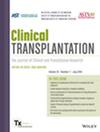Hepatitis B Boosters Using a Different Product vs. the Same Product for Kidney Transplant Recipients: A Retrospective Study With Bayesian Inference
Abstract
Objectives
Hepatitis B vaccination is recommended for those receiving kidney transplants. When hepatitis B surface antibody (HBsAb) levels remain low, the booster dose of the vaccine should be considered. Some consider that the use of a different product as a booster might be beneficial to the patients, but the effectiveness of such a strategy has not been evaluated.
Methods
The kidney transplant recipients (KTR) who received hepatitis B vaccines (Bimmugen or Heptavax-II), and failed to develop enough antibody titer and those who received additional vaccines, were enrolled in the study. Those who received a different product were compared with those who received the same product as the booster. The outcome is the seroconversion of hepatitis B surface antibody level ≧ 10 IU/mL.
Results
A total of 26 patients were non-responders after a receipt of three-dose hepatitis B vaccines. Among those, 15 received additional hepatitis B vaccine of the different product (crossover group), and 11 received the same product (non-crossover group). Only five patients (19.2%) had seroconversion after the booster doses, three in the crossover group (20%) and two in the non-crossover group (18.2%) (p = 1.0). In the Bayesian analysis, the medial posterior probability of the seroconversion rate of the crossover group was 23% (95% CrI: 7%–47%), whereas that of the non-crossover group was 14% (95% CrI: 2%–40%).
Conclusion
The crossover strategy hepatitis B vaccines did not appear to lead to seroconversion of much significance among KTR. Other options to augment the protection should be investigated to protect these populations against the infection.


 求助内容:
求助内容: 应助结果提醒方式:
应助结果提醒方式:


